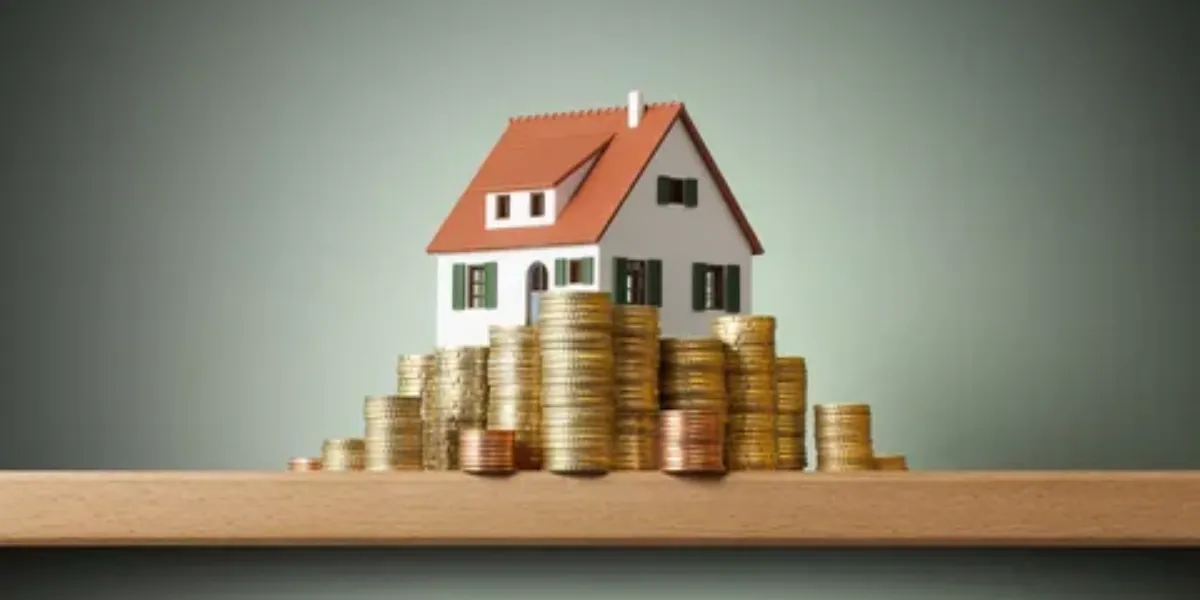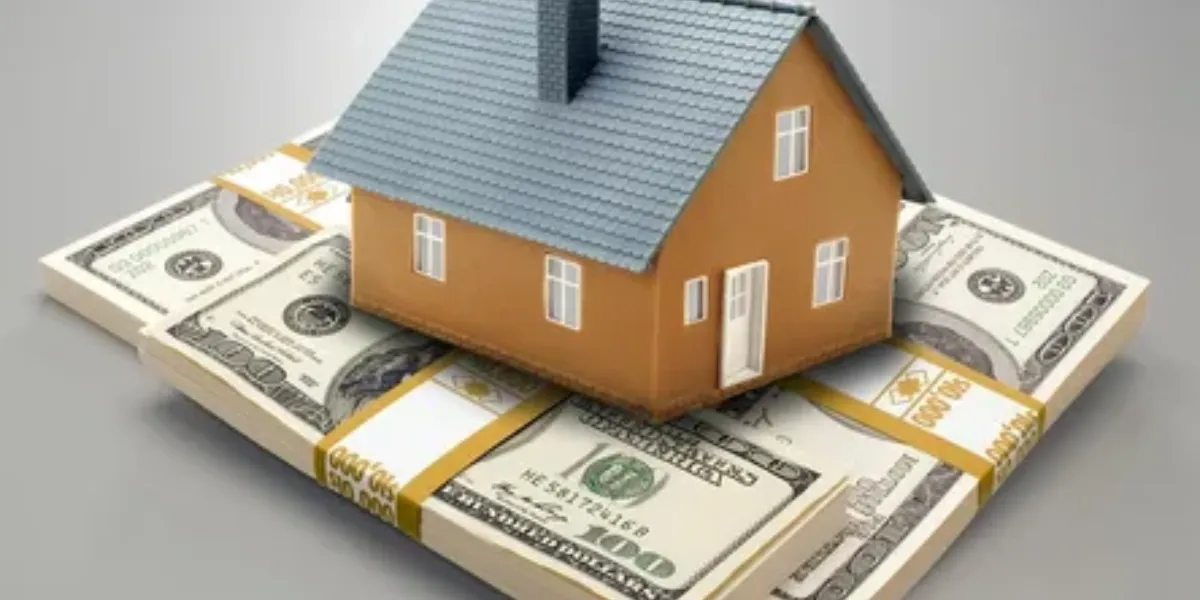Housing Market Revival: Signs of New Growth
In recent times, the housing market has shown clear indications of a resurgence, marking a significant turnaround from previous periods of stagnation or decline. This revival is characterized by several key signs of new growth:
Increased Home Sales: One of the most noticeable signs is the uptick in home sales. More properties are being bought and sold, indicating heightened consumer confidence and a willingness to invest in real estate.
Rising Home Prices: With increased demand, home prices are also on the rise. This is often seen as a positive sign of a robust market, where buyers are willing to pay more, reflecting their optimism about the future value of their investments.
Improved Mortgage Rates: Competitive mortgage rates have made home buying more accessible to a broader segment of the population. Lower interest rates reduce the cost of borrowing, encouraging more people to take out loans to purchase homes.
Decreased Foreclosure Rates: A decline in foreclosure rates suggests that fewer homeowners are struggling to keep up with their mortgage payments, indicating overall economic improvement and stability in the housing sector.
New Construction Projects: There has been a noticeable increase in new housing developments and construction projects. Builders and developers are responding to the growing demand for homes by expanding their projects, leading to more housing options in the market.
Job Market Strength: The revival of the housing market is closely tied to the health of the job market. As employment rates improve and wages rise, more people have the financial stability needed to purchase homes, contributing to market growth.
Investor Activity: Real estate investors are returning to the market, buying properties for rental income or future resale. Their activity often signals confidence in the market’s long-term potential.
Urban and Suburban Growth: Both urban and suburban areas are experiencing growth. Cities are seeing a resurgence in demand as people return to urban living, while suburban areas continue to attract those seeking more space and affordable housing options.
Government Policies and Incentives: Supportive government policies, such as tax incentives for first-time homebuyers or subsidies for new construction, are helping to stimulate the housing market.
Consumer Sentiment: Overall consumer sentiment towards the housing market is positive, reflecting a belief that now is a good time to buy or sell a home. This optimism further fuels market activity and growth.
In conclusion, the signs of new growth in the housing market indicate a broad-based recovery. Increased sales, rising prices, improved mortgage rates, and new construction projects all point towards a market that is breathing again, with renewed vitality and optimism for the future.
Economic Uplift: Housing Market Shows Renewed Activity
The housing market is often seen as a bellwether for the broader economy. When the housing market shows signs of renewed activity, it generally indicates positive trends in economic conditions. Here’s a detailed explanation of this phenomenon:
Economic Indicators Improve: Renewed activity in the housing market typically coincides with improvements in key economic indicators such as GDP growth, employment rates, and consumer spending. A healthier economy boosts consumer confidence and financial stability, enabling more people to consider buying homes.
Rising Employment and Wages: As the economy strengthens, job creation increases and wages rise. Higher employment levels and better wages mean more individuals and families have the financial capability to invest in housing, driving market activity.
Increased Consumer Confidence: Economic uplift often translates into greater consumer confidence. When people feel secure in their jobs and optimistic about the future, they are more likely to make significant financial commitments like purchasing a home.
Higher Demand for Housing: With more people feeling financially secure, demand for housing increases. This heightened demand can lead to more home sales, higher property prices, and increased market activity as buyers compete for available homes.
Accessible Financing Options: During periods of economic growth, financial institutions are more willing to lend, often offering favorable mortgage rates and terms. Easier access to financing encourages more buyers to enter the market, further stimulating housing activity.
New Housing Developments: Developers and builders respond to the increased demand by initiating new housing projects. This not only adds to the housing supply but also creates jobs and stimulates related industries such as construction, real estate, and retail.
Positive Feedback Loop: As the housing market gains momentum, it creates a positive feedback loop. Increased housing activity boosts local economies, creating more jobs and opportunities, which in turn supports further housing market growth.
Government Support: During periods of economic uplift, governments may introduce policies and incentives to support homeownership and housing development. These can include tax breaks for first-time buyers, grants for new construction, and subsidies for affordable housing projects.
Real Estate Investment: Investors, both domestic and international, view a thriving housing market as an attractive investment opportunity. Their investments can take the form of purchasing rental properties, funding new developments, or acquiring real estate assets, all of which contribute to market activity.
Broader Economic Benefits: The renewed activity in the housing market has broader economic benefits. It stimulates related sectors such as construction, banking, and home goods retail, leading to overall economic growth and prosperity.
In summary, the heading “Economic Uplift: Housing Market Shows Renewed Activity” encapsulates the interconnected nature of the housing market and the broader economy. As economic conditions improve, consumer confidence and financial stability rise, leading to increased demand for housing. This renewed activity in the housing market not only reflects economic growth but also contributes to it, creating a cycle of prosperity and development.
Housing Demand Surges: Market Rejuvenation in 2024

The phrase “Housing Demand Surges: Market Rejuvenation in 2024” highlights a significant increase in the demand for housing and a corresponding revitalization of the housing market in the year 2024. Here’s a detailed explanation:
Spike in Homebuyer Interest: One of the most direct signs of a surge in housing demand is a noticeable increase in the number of people looking to buy homes. This can be driven by various factors, including economic stability, lower mortgage rates, and increased consumer confidence.
Economic Stability and Growth: In 2024, economic indicators such as GDP growth, lower unemployment rates, and rising wages contribute to financial stability for many households. With a stronger economic foundation, more people are financially capable of entering the housing market.
Favorable Mortgage Rates: The availability of low mortgage rates makes home buying more affordable, leading to a surge in demand. When borrowing costs are lower, monthly mortgage payments decrease, making homeownership accessible to a larger segment of the population.
Population Growth and Urbanization: Population growth, including migration to urban areas for job opportunities, can significantly increase housing demand. As more people move to cities or urban centers, the need for housing in these areas rises sharply.
Millennial and Gen Z Homebuyers: A large cohort of millennials and older Gen Z individuals are reaching prime home-buying age in 2024. This demographic shift leads to a substantial increase in first-time homebuyers entering the market, driving demand.
Shift in Housing Preferences: Changes in lifestyle preferences, such as a desire for more space, better amenities, or a move to suburban or rural areas post-pandemic, can create new patterns of demand. These shifts can lead to a rejuvenated housing market as builders and sellers adjust to meet these preferences.
Increased Construction and Development: In response to the surge in demand, there is typically an increase in construction and new housing developments. This not only helps meet the current demand but also rejuvenates the market by adding fresh inventory and modern housing options.
Government Incentives and Policies: Government policies that encourage homeownership, such as tax incentives for first-time buyers, grants, and subsidies for affordable housing, can stimulate demand. In 2024, such policies may be particularly effective in driving market activity.
Investment in Real Estate: Increased demand attracts real estate investors, both individual and institutional. Investors seeking rental income or property appreciation contribute to market rejuvenation by adding to the buying activity and sometimes by improving and reselling properties.
Technological Advancements: The adoption of new technologies in real estate, such as virtual tours, online mortgage applications, and digital closings, makes the home buying process more accessible and efficient. This can encourage more people to enter the market, further fueling demand.
In the heading “Housing Demand Surges: Market Rejuvenation in 2024″ signifies a period where heightened demand for housing revitalizes the market. Economic stability, favorable mortgage rates, demographic shifts, and supportive government policies are among the key factors driving this demand. As a result, the housing market experiences robust growth, increased activity, and a rejuvenation that reflects broader economic trends and consumer confidence.
Real Estate Recovery: What’s Fueling the Housing Market Rebound?
The heading “Real Estate Recovery: What’s Fueling the Housing Market Rebound?” explores the factors contributing to the revitalization of the housing market. Understanding these driving forces provides insight into why the market is bouncing back. Here’s an in-depth explanation:
Economic Recovery: The broader economic recovery is a major factor. As the economy grows, with improvements in GDP, employment rates, and consumer spending, people have more financial stability and confidence, which translates into increased real estate activity.
Low Mortgage Rates: Historically low mortgage rates make borrowing more affordable, encouraging more people to buy homes. Lower interest rates reduce monthly payments, making homeownership more accessible to a wider range of buyers.
Government Stimulus and Policies: Government interventions, such as stimulus packages, tax incentives for homebuyers, and programs to support affordable housing, have provided significant boosts to the housing market. These policies help reduce financial barriers for buyers.
Pent-Up Demand: After periods of economic uncertainty or housing market stagnation, there is often pent-up demand from buyers who delayed their purchases. As confidence returns, these buyers enter the market, leading to a surge in activity.
Demographic Shifts: Changes in demographics, such as millennials reaching prime home-buying age, significantly impact the housing market. This large cohort is now financially ready to purchase homes, driving up demand.
Remote Work Trends: The shift to remote work, accelerated by the COVID-19 pandemic, has changed housing preferences. Many people are moving away from urban centers to suburban or rural areas in search of more space and better living conditions, fueling housing market activity in these regions.
Increased Savings Rates: During economic downturns, many people tend to save more money. With higher savings rates, potential homebuyers have more funds for down payments and other costs associated with purchasing a home, facilitating market recovery.
Investment in Real Estate: Real estate is often seen as a stable investment, especially in uncertain times. Increased activity from investors, who are buying properties for rental income or capital appreciation, contributes to market recovery.
Technological Advancements: The adoption of technology in real estate transactions, such as virtual tours, online mortgage applications, and digital closings, has made the home buying process more efficient and accessible. This encourages more buyers and sellers to participate in the market.
Supply Chain Improvements: Improvements in the supply chain for building materials and a return to full capacity for construction labor have helped increase the supply of new homes. A better balance between supply and demand supports a more stable and growing housing market.
In conclusion, the heading “Real Estate Recovery: What’s Fueling the Housing Market Rebound?” encompasses a variety of factors that are driving the resurgence of the housing market. Economic recovery, favorable mortgage rates, government support, demographic trends, and technological advancements all play critical roles in revitalizing the market. These elements combine to create a conducive environment for homebuyers, sellers, and investors, leading to a robust rebound in real estate activity.
Bidding Wars Return: Competitive Housing Market Sees New Life

The heading “Bidding Wars Return: Competitive Housing Market Sees New Life” highlights the resurgence of intense competition among homebuyers, characterized by bidding wars, and indicates a revitalized and dynamic housing market. Here’s a detailed explanation:
Increased Buyer Demand: A significant rise in the number of potential homebuyers, driven by factors such as economic recovery, low mortgage rates, and demographic shifts, leads to heightened demand for housing. When multiple buyers are interested in the same property, bidding wars often ensue.
Limited Housing Inventory: A shortage of available homes for sale amplifies competition. When the supply of homes cannot keep up with the demand, buyers are more likely to bid against each other, driving up prices and creating a highly competitive market.
Economic Stability and Confidence: Improved economic conditions, including lower unemployment rates and rising incomes, boost consumer confidence. More individuals feel financially secure enough to enter the housing market, increasing competition.
Low Mortgage Rates: Historically low mortgage rates make borrowing cheaper, encouraging more people to buy homes. This influx of buyers intensifies competition for the limited number of available properties.
Urban Exodus and Suburban Demand: The trend of moving from urban centers to suburban or rural areas, partly driven by the shift to remote work, has increased demand in these regions. As more buyers seek homes in desirable suburban areas, competition and bidding wars become more common.
Pent-Up Demand: During periods of economic uncertainty, potential buyers may delay purchasing a home. As conditions improve, this pent-up demand is released into the market, leading to a sudden surge in buyer activity and increased competition for available homes.
Investor Activity: Real estate investors, seeking rental properties or opportunities for capital appreciation, contribute to the competitive environment. Their willingness to outbid other buyers adds to the intensity of bidding wars.
Desirable Property Features: Homes with attractive features, such as modern amenities, good locations, and ample space, tend to attract multiple offers. The higher demand for such properties can lead to competitive bidding situations.
Psychological Factors: Bidding wars can create a sense of urgency among buyers, driven by the fear of missing out (FOMO). This psychological factor can lead to more aggressive bidding and higher final sale prices.
Technological Facilitation: Online real estate platforms and virtual tours make it easier for buyers to quickly find and bid on homes, contributing to faster-paced and more competitive market dynamics.
In conclusion, the heading “Bidding Wars Return: Competitive Housing Market Sees New Life” captures the essence of a housing market rejuvenated by increased demand and limited supply. Economic stability, favorable mortgage rates, demographic trends, and technological advancements all contribute to a highly competitive environment where bidding wars are a common occurrence. This competition signifies a vibrant and active housing market, reflecting broader economic recovery and consumer confidence.
Indicators of a Revitalized Housing Sector
The heading “Home Sales Spike: Indicators of a Revitalized Housing Sector” highlights a significant increase in the number of home sales, signaling a rejuvenation of the housing market. Here’s a detailed explanation of what this means and the factors driving this trend:
Rising Home Sales Volumes: A spike in home sales indicates a marked increase in the number of homes being bought and sold. This trend reflects a strong demand for housing and an active market where transactions are occurring more frequently.
Economic Recovery: The overall economic recovery, characterized by GDP growth, lower unemployment rates, and higher consumer spending, is a major driver of increased home sales. As the economy strengthens, people feel more financially secure and confident in making large investments like home purchases.
Low Mortgage Rates: Historically low mortgage rates make borrowing more affordable, encouraging more people to buy homes. Lower interest rates reduce monthly mortgage payments, making homeownership accessible to a broader range of buyers and stimulating sales.
Increased Consumer Confidence: Improved economic conditions boost consumer confidence. When people are optimistic about their financial future, they are more likely to enter the housing market, leading to a surge in home sales.
Demographic Trends: Significant demographic shifts, such as millennials reaching prime home-buying age, contribute to the rise in home sales. This large cohort, now financially stable, is entering the market in large numbers, driving demand and sales.
Remote Work and Housing Preferences: The shift to remote work has changed housing preferences, with many people seeking larger homes or properties in suburban and rural areas. This change in demand leads to increased home sales as buyers relocate to areas that better suit their new lifestyles.
Government Incentives: Government policies and incentives, such as tax credits for first-time homebuyers and subsidies for new construction, can stimulate the housing market by making it easier and more attractive for people to buy homes.
Pent-Up Demand: Periods of economic uncertainty often result in delayed home-buying decisions. As conditions improve, this pent-up demand is released, leading to a significant increase in home sales as buyers who were previously hesitant now enter the market.
Improved Housing Supply: Increased construction and new housing developments can also contribute to a spike in home sales. Builders respond to high demand by adding more homes to the market, providing more options for buyers and facilitating more transactions.
Investment Opportunities: Real estate remains a popular investment option, particularly during times of economic recovery. Investors purchasing properties for rental income or capital appreciation add to the volume of home sales.
In conclusion, the heading “Home Sales Spike: Indicators of a Revitalized Housing Sector” reflects a robust and active housing market driven by economic recovery, low mortgage rates, demographic trends, and changing housing preferences. The increase in home sales signifies a healthy market where buyers are confident and financially capable of making significant investments. This trend is a positive indicator of broader economic stability and growth, showcasing a revitalized housing sector.
Mortgage Rates and Market Revival: A Delicate Balance

The heading “Mortgage Rates and Market Revival: A Delicate Balance” highlights the intricate relationship between mortgage interest rates and the overall health of the housing market. Here’s an in-depth explanation of this relationship and its implications:
Influence of Mortgage Rates on Affordability: Mortgage rates significantly impact the affordability of buying a home. Lower rates reduce the cost of borrowing, making monthly mortgage payments more manageable for buyers. This affordability boosts home purchases and stimulates market activity.
Stimulating Demand with Low Rates: When mortgage rates are low, more people can afford to buy homes, leading to increased demand. This surge in demand can drive home sales and contribute to a revitalized housing market as more transactions occur.
Impact on Home Prices: Low mortgage rates often lead to higher home prices. As more buyers enter the market, the increased competition can drive up prices. While this benefits sellers and increases market activity, it can also make affordability a concern if prices rise too quickly.
Economic Conditions and Rate Adjustments: Mortgage rates are influenced by broader economic conditions, including inflation, employment rates, and monetary policy. Central banks, like the Federal Reserve in the U.S., may adjust interest rates to balance economic growth and inflation. These adjustments directly affect mortgage rates and the housing market.
Balancing Act for Lenders: Lenders must balance offering attractive mortgage rates with maintaining profitability and managing risk. Extremely low rates can spur market activity but may reduce lenders’ profit margins and increase their exposure to default risk if borrowers are unable to repay loans.
Long-Term Market Stability: While low mortgage rates can jumpstart a sluggish housing market, maintaining long-term market stability requires careful management. If rates are kept too low for too long, it could lead to overheating in the housing market, with unsustainably high prices and potential bubbles.
Rate Increases and Market Cooling: Conversely, increasing mortgage rates can cool the housing market. Higher rates make borrowing more expensive, reducing affordability and slowing down home purchases. This cooling effect can help stabilize prices but may also reduce market activity.
Homebuyer Sentiment: The perception of future rate changes influences homebuyer behavior. Expectations of rising rates can create urgency among buyers to lock in current low rates, boosting short-term demand. Conversely, expectations of falling rates might cause buyers to delay purchases, waiting for better deals.
Impact on Refinancing Activity: Mortgage rates also affect refinancing activity. Low rates encourage existing homeowners to refinance their mortgages to lower rates, reducing their monthly payments and freeing up disposable income, which can stimulate the economy.
Policy Implications: Policymakers must consider the delicate balance between fostering a healthy housing market and preventing economic imbalances. Decisions on interest rates, housing policies, and financial regulations all play a role in maintaining this balance.
In conclusion, the heading “Mortgage Rates and Market Revival: A Delicate Balance” underscores the critical role that mortgage rates play in the housing market’s health. Low rates can stimulate demand and market activity, but they must be managed carefully to avoid market imbalances. The relationship between mortgage rates and the housing market is dynamic and requires ongoing attention from policymakers, lenders, and market participants to ensure sustainable growth and stability.
Urban Exodus Reverses: City Housing Markets Experience Resurgence
The heading “Urban Exodus Reverses: City Housing Markets Experience Resurgence” signifies a shift in housing trends, where the previous movement away from urban areas is now being reversed, leading to a renewed interest and growth in city housing markets. Here’s an in-depth explanation:
Shift in Preferences: After a period where many people moved away from cities to suburban or rural areas—often due to the COVID-19 pandemic and the rise of remote work—there is now a renewed interest in urban living. This shift reflects changing preferences and circumstances.
Economic Recovery and Job Opportunities: As economies recover and urban job markets rebound, more people are attracted to cities for employment opportunities. This return to urban areas boosts demand for city housing.
Cultural and Lifestyle Amenities: Cities offer diverse cultural, social, and recreational amenities that are less accessible in suburban or rural areas. The appeal of vibrant city life, including dining, entertainment, and cultural events, draws people back to urban environments.
Improvements in Urban Living: Cities may have made improvements in infrastructure, safety, and livability, making urban areas more attractive. Investments in public transportation, green spaces, and housing developments enhance the quality of life in cities.
Rising Property Values: Increased demand for city housing can lead to rising property values. This resurgence in urban housing markets can attract both homeowners and investors looking for appreciation potential and rental income opportunities.
Return to Office: As companies increasingly call employees back to the office, even if in hybrid formats, proximity to workplaces becomes a factor again. This necessity encourages people to move back to or stay in cities where major employers are located.
Educational Institutions: Urban areas are often home to major educational institutions. As in-person learning resumes fully, students, faculty, and staff contribute to the demand for urban housing.
Young Professionals and Graduates: Young professionals and recent graduates, who value the networking opportunities, social scenes, and convenience of city living, are moving into urban areas, driving housing demand.
Infrastructure and Transportation: Cities with robust public transportation systems and infrastructure improvements make urban living more convenient and desirable, reducing the dependency on cars and enhancing overall accessibility.
Real Estate Development: Developers are responding to renewed urban demand by investing in new residential projects, renovations, and mixed-use developments, which further stimulates the housing market and attracts more residents.
In the heading “Urban Exodus Reverses: City Housing Markets Experience Resurgence” captures a trend where people are moving back to cities, reversing the earlier trend of moving away. This resurgence is driven by economic recovery, job opportunities, lifestyle amenities, improved urban living conditions, and a return to in-person activities. As a result, urban housing markets are seeing increased demand, rising property values, and renewed investment, marking a significant turnaround from previous years.
Housing Inventory Increases: Supply Meets Renewed Demand

The heading “Housing Inventory Increases: Supply Meets Renewed Demand” indicates a positive development in the housing market where the supply of homes for sale is increasing to meet the growing demand from buyers. Here’s a detailed explanation:
Supply and Demand Dynamics: In a balanced housing market, the supply of homes (inventory) matches or closely aligns with the demand from potential buyers. An increase in housing inventory suggests that more homes are available for sale, providing buyers with more options and potentially moderating price increases.
Factors Driving Increased Inventory:
New Construction: Builders and developers respond to increased demand by constructing new homes. This new supply helps alleviate shortages and supports market growth.
Homeowners Listing Properties: Improved market conditions, higher home prices, and increased buyer interest encourage more homeowners to list their properties for sale, adding to the inventory.
Investor Activity: Real estate investors may also contribute to the inventory increase by selling properties they have renovated or held for rental income, responding to favorable market conditions.
Impact on Market Dynamics:
Stabilization of Prices: When housing inventory increases, the balance between supply and demand can stabilize or moderate price growth. Buyers have more options, reducing the intensity of bidding wars and allowing for more considered purchasing decisions.
Increased Affordability: A larger inventory of homes can make homeownership more accessible to a broader range of buyers. Increased affordability can stimulate further demand and support a healthy housing market.
Market Resilience and Economic Factors:
Economic Recovery: Economic stability and growth often lead to increased housing inventory as consumer confidence rises, and homeowners feel more comfortable listing their properties.
Interest Rates: Mortgage rates play a role in housing inventory levels. Lower rates can stimulate demand and encourage homeowners to refinance or move, potentially increasing inventory.
Regional Variations: Housing inventory levels can vary significantly by region and market segment. Urban, suburban, and rural areas may experience different inventory dynamics based on local economic conditions, population trends, and housing policies.
Government Policies: Policies that support housing development, such as zoning reforms, incentives for builders, and programs to increase affordable housing, can influence housing inventory levels and help meet demand.
Market Adjustments: The housing market is dynamic and can adjust over time. Increases in inventory reflect market responsiveness to changing conditions, including shifts in buyer preferences, economic factors, and external events.
In conclusion, “Housing Inventory Increases: Supply Meets Renewed Demand” signals a healthier and more balanced housing market where the availability of homes for sale is expanding to accommodate a growing number of buyers. This increase in inventory supports market stability, affordability, and overall growth, contributing to a more sustainable housing sector.
Market Trends 2024: Housing Sector Bounces Back Stronger
The heading “Market Trends 2024: Housing Sector Bounces Back Stronger” encapsulates the anticipated developments and shifts in the housing market for the year 2024, highlighting a robust recovery and enhanced resilience. Here’s a comprehensive explanation:
Economic Recovery: A key factor driving the stronger bounce-back of the housing sector in 2024 is the broader economic recovery. Improvements in GDP growth, employment rates, and consumer confidence provide a solid foundation for increased housing market activity.
Low Mortgage Rates: Favorable mortgage rates continue to support the housing sector. Lower interest rates make borrowing more affordable, stimulating demand for homes and encouraging existing homeowners to refinance or upgrade.
Supply and Demand Dynamics: The balance between housing supply and demand is crucial. In 2024, an alignment or increase in housing inventory meets renewed buyer demand, contributing to a more stable and active market.
Technological Integration: Increasing use of technology in real estate transactions enhances market efficiency and accessibility. Virtual tours, online mortgage applications, and digital closings streamline the buying and selling process, attracting more participants to the market.
Demographic Shifts: Demographic trends, such as millennials entering prime home-buying age and changes in lifestyle preferences post-pandemic, influence housing demand. Understanding these shifts helps developers and sellers tailor offerings to meet evolving consumer needs.
Urban Revitalization: The reversal of the urban exodus sees a resurgence in city housing markets. Economic opportunities, cultural amenities, and infrastructure improvements attract buyers back to urban centers, stimulating market growth.
Government Policies: Supportive government policies, including incentives for first-time homebuyers, infrastructure investments, and initiatives to increase affordable housing, bolster the housing sector’s recovery.
Investor Activity: Real estate investors play a significant role in the market’s strength. Their participation in buying rental properties, renovating homes, or funding new developments contributes to overall market resilience and expansion.
Sustainable Development: Increasing focus on sustainable and energy-efficient housing solutions aligns with consumer preferences and regulatory mandates. Builders and developers incorporate these features into new projects, shaping market trends.
Market Adaptability: The housing sector’s ability to adapt to changing economic conditions, consumer behavior, and external factors like geopolitical events ensures its resilience. Adaptability fosters innovation and growth within the market.
In summary, “Market Trends 2024: Housing Sector Bounces Back Stronger” reflects an optimistic outlook for the housing market, driven by economic recovery, low mortgage rates, technological advancements, demographic shifts, and supportive policies. These factors combine to create a dynamic and resilient housing sector poised for growth and improvement in the year ahead.
Click here for more visited Posts!





